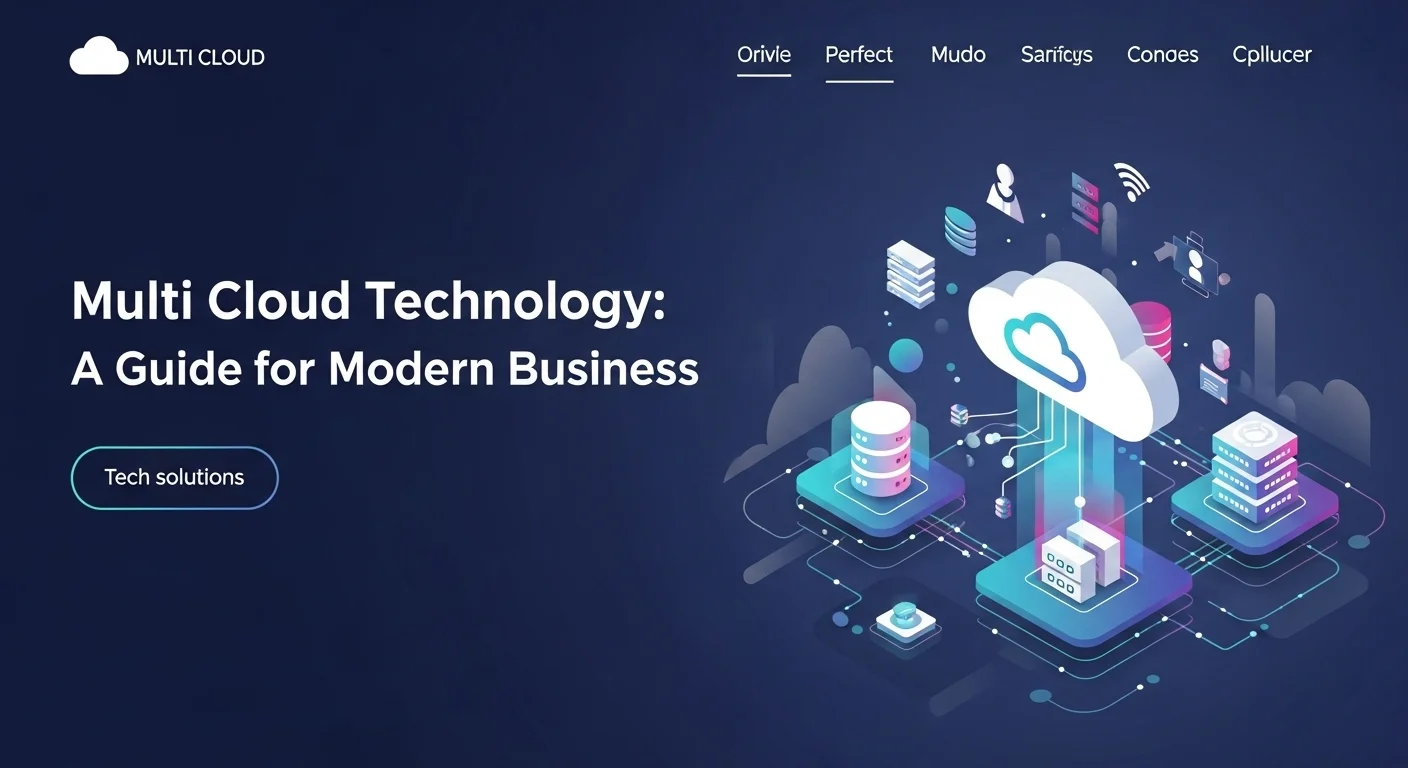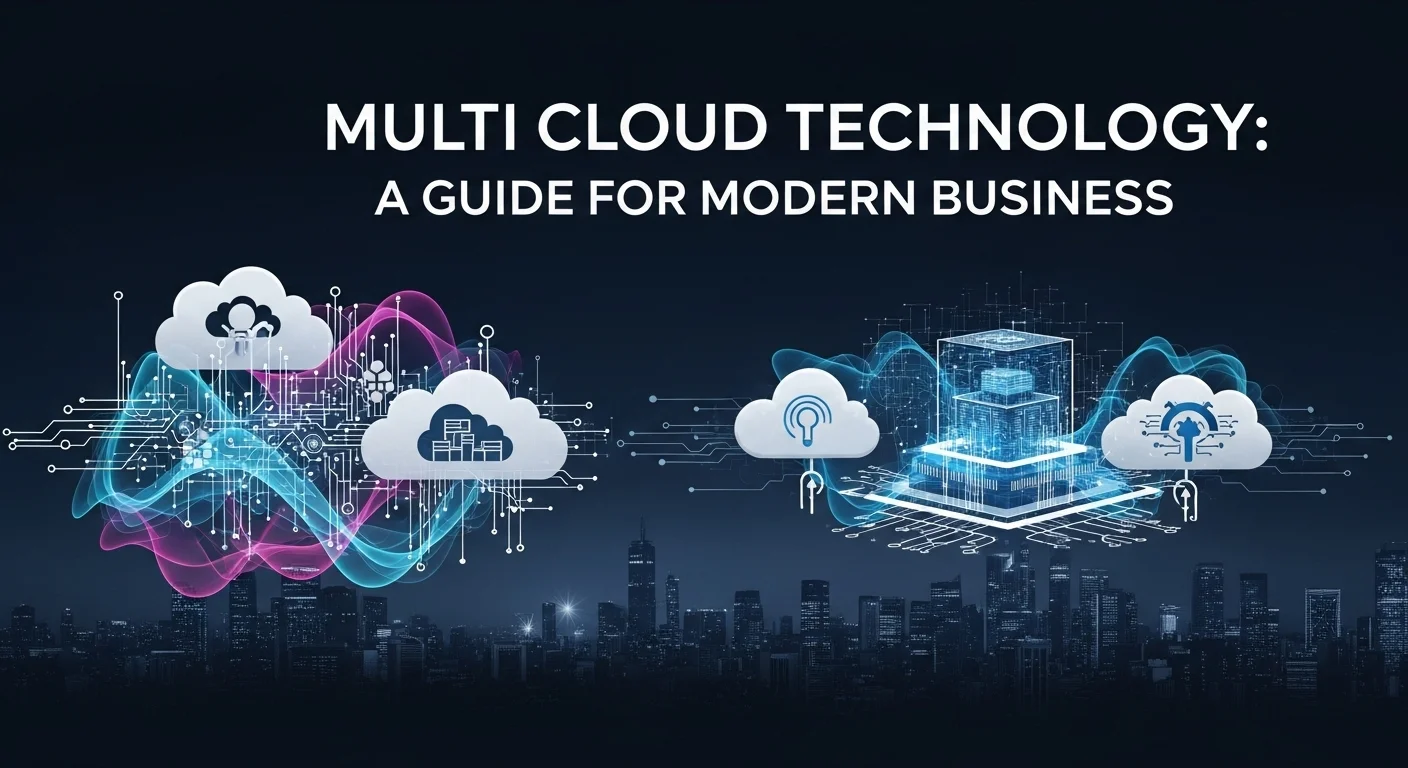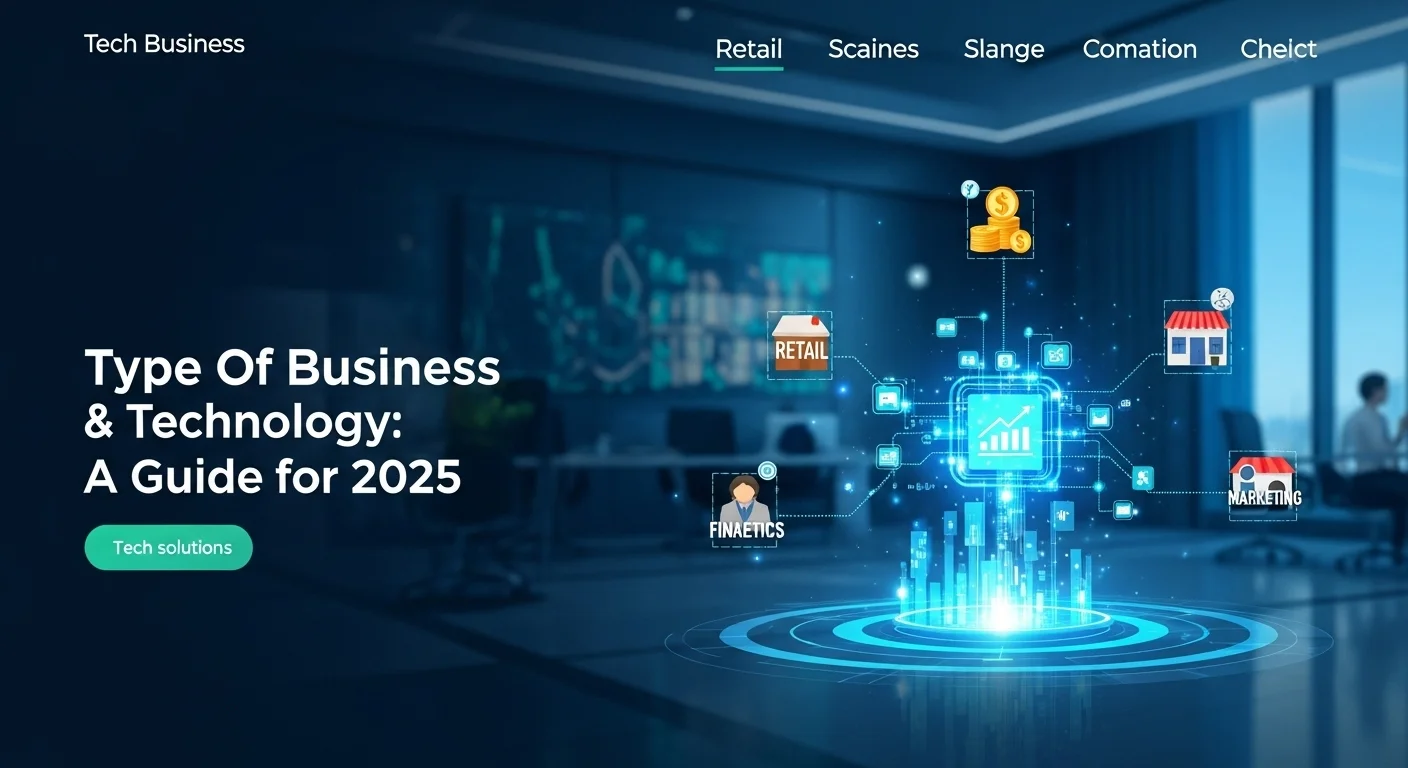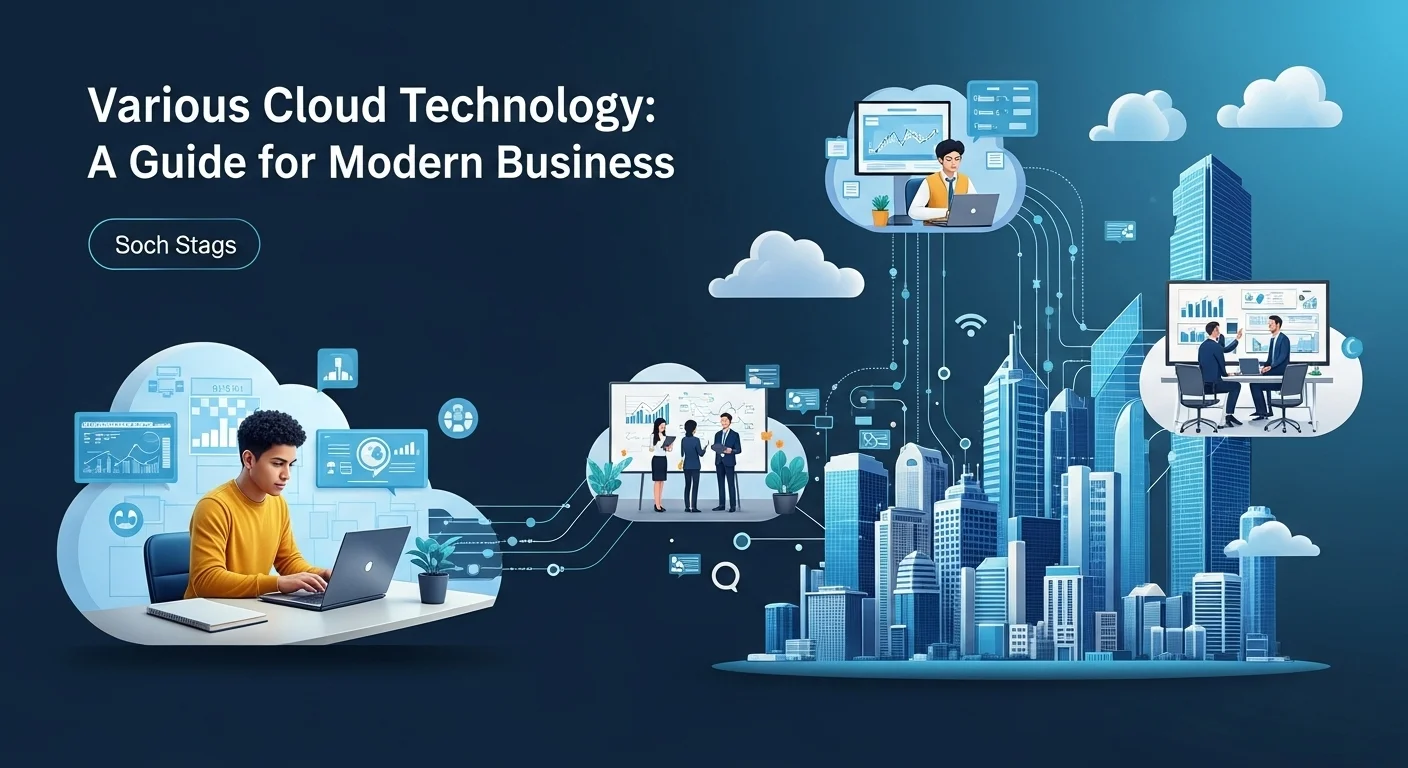Multi-Cloud Strategy Explained: A Practical Guide for Modern Business

Executive Summary
In my years as a cloud strategist, I've seen companies go from fearing the cloud to depending on it. Now, the smartest ones are taking the next leap: not just using one cloud, but several. This is the heart of a multi-cloud strategy. It's not just a buzzword; it's a powerful approach to building a business that's resilient, flexible, and truly competitive. This article is my personal guide, cutting through the jargon. We'll explore what a multi-cloud environment actually is, how it's different from a hybrid cloud, and why it's become so crucial. I’ll share my insights on the real-world benefits, like slashing costs, dodging the dreaded vendor lock-in, and building a disaster recovery plan that actually works. Think of this as your roadmap to creating an IT environment that’s ready for anything the future throws at it.
Table of Contents
Table of Contents
What is Multi-Cloud and Why is it a Game-Changer?
In the world of technology, 'cloud' is a term everyone knows. But the real, strategic conversation has moved on. We're now talking about Multi-Cloud, and it’s a total game-changer for how businesses build their digital backbone. Put simply, a multi-cloud strategy means using services from two or more cloud providers. Think of it this way: you wouldn't buy all your clothes from one store, right? You pick the best jeans from one place, the best shoes from another. Multi-cloud is the same idea for your technology—you choose the best services from different providers to meet specific needs, optimizing for performance, features, and cost. It’s important not to confuse this with a hybrid cloud. A hybrid cloud is a mix of a private, on-premise cloud and a public cloud. You can absolutely have a setup that's both hybrid and multi-cloud—for instance, using your own data center alongside services from both Amazon Web Services (AWS) and Google Cloud. But a multi-cloud setup can also be just a mix of different public clouds, no private component necessary.
So, why is this approach so important today? The biggest reason I see driving adoption is freedom from vendor lock-in. I've seen companies get stuck with a single provider, and it's a risky place to be. If that provider hikes prices or has a major outage, the business is left scrambling. A multi-cloud strategy gives you leverage and flexibility. It spreads the risk. Another huge benefit is getting the 'best-of-breed' services. The truth is, different providers excel at different things. One might have phenomenal AI and machine learning tools, while another offers a cheaper, more robust database solution. A multi-cloud approach lets you handpick the best tool for every job, which ultimately leads to a more powerful and efficient system. This strategic selection is the essence of modern multi-cloud computing; it's how businesses build highly tailored, high-performance IT environments.
The practical benefits for businesses are clear and immediate. For an e-commerce site, this could mean running their main storefront on a provider known for rock-solid stability, while using a different provider's powerful analytics tools to analyze customer data. For a global company, it’s often about compliance. Many countries have data sovereignty laws requiring citizen data to be stored locally. By using providers with data centers in those specific regions, companies can easily comply. This also makes everything faster for users, as serving them from a nearby data center dramatically reduces latency. And let's not forget disaster recovery. If one of your cloud providers goes down, you can failover your critical applications to another. This creates a level of resilience that's incredibly difficult and expensive to achieve when you're all-in on a single provider.
To make all this work, you need solid multi-cloud networking solutions. These are the tools and architectures that create secure, high-speed connections between your different cloud environments. It’s a complex puzzle, but technologies like SD-WAN (Software-Defined Wide Area Networking) have made it much more manageable by providing a central control panel for your entire network. The multi-cloud hosting landscape has also matured. You can manage everything yourself or, as many businesses do, hire a managed service provider to handle the complexity for you. This growth has fueled a boom in the multi-cloud networking market, with incredible innovation happening as more companies embrace a distributed cloud future. Even the software we use daily is going multi-cloud. Many multi-cloud SaaS (Software as a Service) applications are built across multiple clouds to guarantee uptime for their customers. For businesses today, the question is no longer 'if' they should adopt a multi-cloud strategy, but 'how' to do it right to gain the agility and freedom they need to succeed.

A Practical Guide to Multi-Cloud Solutions
Getting started with multi-cloud isn't just about signing up for a few accounts; it requires a thoughtful plan to manage it all without creating chaos. In my experience, the first step is always to build a clear governance framework. This is your rulebook. It defines your policies for security, compliance, cost management, and performance across all cloud platforms. Without good governance, a multi-cloud environment can quickly become the 'wild west,' with runaway costs and security holes. A key part of this is establishing a Cloud Center of Excellence (CCoE). This is a dedicated team of your best people from across the company who champion cloud best practices, guide other teams, and steer the overall strategy. This team is the glue that holds a successful multi-cloud implementation together.
On the technical side, the biggest hurdle is complexity. Every cloud provider has its own tools, APIs, and quirks. To tame this beast, we rely on abstraction layers and Infrastructure-as-Code (IaC) tools. Tools like Terraform are invaluable here; they let you define your infrastructure in code that can be used across AWS, Azure, and Google Cloud. You write it once, and you can deploy it anywhere. This automates setup and keeps everything consistent. Another hero in the multi-cloud story is Kubernetes. By packaging your applications into containers, you make them portable. Kubernetes then acts as the universal operating system for these containers, allowing you to move them between different clouds with little to no changes. This kind of workload mobility is the key to truly avoiding vendor lock-in, which is a core goal of multi-cloud computing.
Networking is where things can get really tricky. You need to securely connect resources scattered across different clouds and your own data centers. Old-school networking just can't keep up. This is where modern multi-cloud networking solutions shine. Technologies like SD-WAN intelligently route your traffic, while SASE (Secure Access Service Edge) combines networking and security into a single cloud service. These solutions give you a bird's-eye view and central control over your entire network, which is critical for security and performance. The multi-cloud networking market is full of innovative vendors, so when you're evaluating options, look for things like automated setup, strong encryption, and easy integration with your security stack.
When it comes to multi-cloud hosting, you have a few paths. You can manage it all yourself, which gives you total control but requires a lot of in-house expertise. A more popular route is to partner with a managed service provider (MSP) that specializes in multi-cloud. They handle the day-to-day operations, so your team can focus on innovation. A third option is a multi-cloud management platform (MCMP), which provides a single dashboard to manage costs, security, and resources across all your clouds. And of course, you need to compare the big players: AWS, Azure, and Google Cloud (GCP). Don't just look at the price tag. AWS has the most services, Azure is incredibly strong in the enterprise world with its Microsoft integrations, and GCP is a leader in data analytics and Kubernetes. Your choice should be based on which provider offers the best tools for your specific workloads.
Finally, let's not forget about multi-cloud SaaS. Your business probably runs on dozens of SaaS apps. Your multi-cloud strategy needs to consider how you’ll integrate them and manage the data that flows between them. This often means using an integration platform (iPaaS) to connect everything and automate workflows. My advice for getting started? Don't try to boil the ocean. Start with a small pilot project, like moving a single non-critical app. Learn from that experience, build confidence, and then expand. And make sure you define what success looks like from the start. Track metrics for performance, agility, and resilience, not just cost savings. A well-planned multi-cloud strategy is a journey, but it's one that delivers a huge competitive advantage in the long run.

Expert Tips & Strategies for Multi-Cloud Success
Having a solid multi-cloud setup is one thing; making it truly great is another. This requires a focus on constant improvement. Here are some of the most important lessons I've learned from my time in the trenches, covering security, cost control, and future-proofing your strategy. First and foremost: security. A multi-cloud environment has a larger attack surface, so you need to be extra vigilant. The guiding principle here should be a 'zero-trust' security model. In simple terms, this means 'trust no one, verify everything.' Every single request to access a resource must be authenticated and authorized, no matter where it comes from. To put this into practice, you need centralized identity and access management (IAM). Using a single system like Azure AD or Okta to manage user access across all your clouds makes life simpler and your environment much more secure. It ensures people only have access to what they absolutely need.
Protecting your data is just as critical. You need a rock-solid encryption strategy for data everywhere—whether it's sitting on a drive (at rest) or moving across the network (in transit). While cloud providers offer their own encryption, I always recommend clients consider managing their own encryption keys for an extra layer of control. Data loss prevention (DLP) tools are also a must-have; they act as a safety net to prevent sensitive data from leaving your environment. And for any business in a regulated industry, compliance automation is a lifesaver. Tools that constantly scan your cloud setups for compliance with rules like GDPR or HIPAA can spot and fix issues in real-time, helping you avoid massive fines.
Next up is cost management, which we in the industry call FinOps. Without strict financial discipline, multi-cloud costs can get out of hand fast. The key to good FinOps is visibility. You need tools that give you a clear, detailed breakdown of your cloud spending across all providers. Once you can see where the money is going, you can start optimizing. One of the easiest wins is 'rightsizing'—analyzing your usage and downsizing oversized resources to fit what you actually need. Automating the shutdown of non-production environments after work hours can also save a surprising amount of money. And take advantage of reserved instances or savings plans for predictable workloads; they offer huge discounts. A mature FinOps practice creates a culture where everyone is mindful of costs, which is essential for maximizing the ROI of multi-cloud computing.
The right tools make all the difference. As I mentioned before, Infrastructure-as-Code (like Terraform) and container orchestration (like Kubernetes) are non-negotiable. I also strongly advise looking into a multi-cloud management platform (MCMP) for a unified control panel. These platforms simplify everything from cost management to security and can free up your team from a lot of operational headaches. For monitoring, you need a solution that can pull in data from your entire stack, from infrastructure to applications. This unified view is the only way to quickly troubleshoot problems in such a complex environment. The goal is to build an automated toolchain that supports your applications from development all the way to production and beyond.
Looking ahead, the multi-cloud world will keep changing. Edge computing will bring the cloud closer to users, and serverless computing will make infrastructure even more abstract. To stay ahead, you need a culture of continuous learning. Encourage your teams to experiment with new technologies and be ready to adapt your strategy. A fantastic resource for staying current is the Cloud Foundry Foundation, which is a great hub for the cloud-native community. By focusing on best practices in security, costs, and tooling, you can build a resilient foundation for whatever comes next. The strategic use of multi-cloud hosting and smart multi-cloud networking solutions will be your keys to harnessing the full power of the cloud.
Finally, and this might be the most important tip, invest in your people. The technology is just a tool; it's the people and processes that create real value. Cross-train your engineers so they're comfortable with multiple cloud platforms. This makes your team more flexible and less dependent on any single person. Foster a true DevOps culture of collaboration and shared responsibility. Your Cloud Center of Excellence should lead this charge, giving teams the support they need to succeed. When you build a skilled, empowered workforce, your multi-cloud strategy transforms from a technical project into a true engine for business innovation.
Expert Reviews & Testimonials
Sarah Johnson, Business Owner ⭐⭐⭐⭐
As a small business owner, I found the concepts helpful, but I was hoping for a case study or two on how a company like mine could start small with multi-cloud. The theory is great, though!
Mike Chen, IT Consultant ⭐⭐⭐⭐
Solid overview of multi-cloud. It really clarified the difference between hybrid and multi-cloud for me, which was a sticking point. Some of the networking concepts were a bit dense, but the section on governance was spot-on.
Emma Davis, Tech Expert ⭐⭐⭐⭐⭐
This is one of the best deep dives into multi-cloud I've read. It connects the dots between strategy, technology (like Kubernetes and Terraform), and operations (FinOps). A must-read for anyone in the cloud space.



